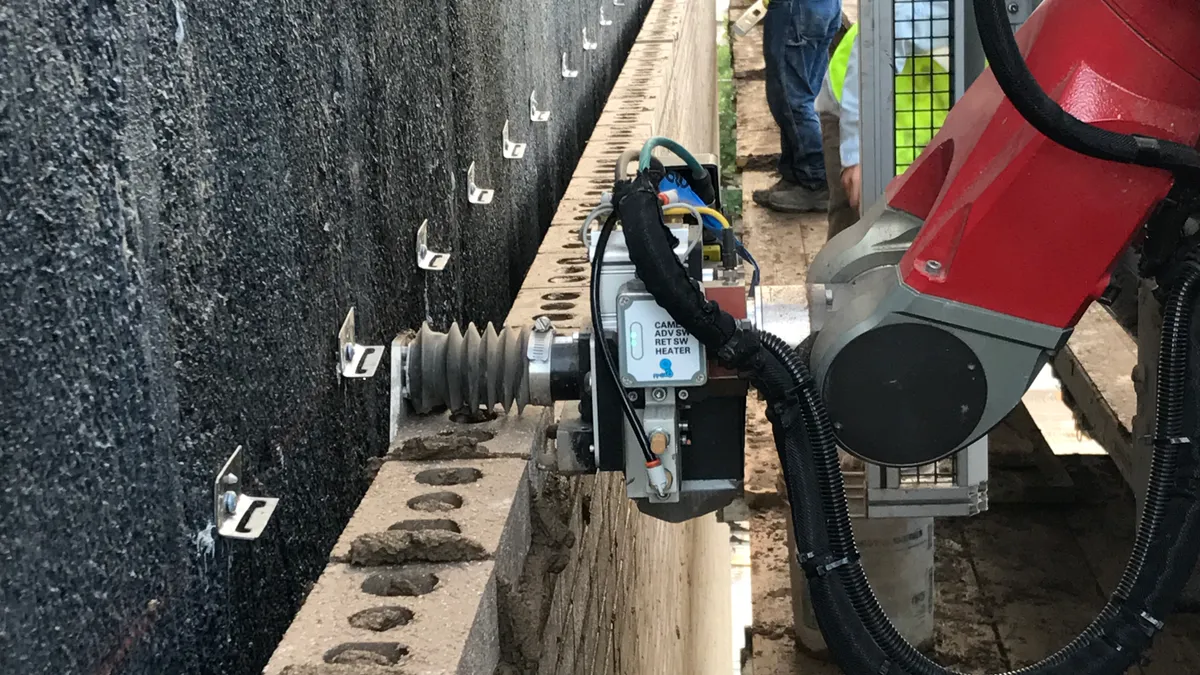While many industries see robots and automation as a threat to American workers, construction looks to technologies like Construction Robotics’ semi-automated mason — known as SAM — as a great bet for completing tasks for which there simply aren’t enough workers.
A recent survey jointly conducted by Autodesk and the Associated General Contractors of America found that 80% of 2,500 respondents across U.S. regions are having a difficult time filling hourly craft positions. Construction employment may be slowly inching back up to its pre-recession levels, but the labor shortage rages on, and in the meantime, contractors have bricks to lay and project deadlines to meet.
Birmingham, Alabama-based Hoar Construction is researching and piloting technologies that can help it “build quality projects faster, safer and smarter,” according to project manager Bill Lampkin. The company recently completed a federal project in Roanoke, Virginia, during which 250,000 bricks — 70% of the project's total — were put in place by a robot. Construction Dive asked Lampkin about the team’s experience with its newest member, SAM.
This interview has been edited for clarity and brevity.
CONSTRUCTION DIVE: What was SAM's role on the Poff Federal Building project?
BILL LAMPKIN: As part of the project, we replaced a 14-story brick exterior. One of the challenges we faced was removing and replacing those bricks within the schedule, so with the help of our technology division, we found a solution in SAM, a robot that can lay brick six times faster than a single mason. SAM laid an average of 3,000 bricks per day on the job, its largest project to date.
What were the benefits of using the robot?
LAMPKIN: Poff is located in a remote portion of the state. Labor is an issue around the country, so with a limited supply of manpower, SAM really helped us meet our schedule. Since it was a federal job, we also had to worry about getting security clearances, another layer of complication. SAM helped us overcome both labor and schedule challenges.
In addition to being faster, SAM is also safer, removing a lot of the need for heavy, repetitive lifting for our masons. Finally, SAM added a layer of quality control that we would not have been able to provide with hand-laid brick — it has tools built in to help. We could actually view in real time how many bricks were being laid, detect if any bricks were out of tolerance, and measure bed joints of bricks.
Did you face any challenges piloting the technology?
LAMPKIN: We researched SAM a lot and really studied our drawings. Since the design of the building didn’t have any punched openings and had long flat runs, we really felt it was a good opportunity to use the robot. We still had to convince our client, so we worked closely with Construction Robotics and did extensive tests to ensure we could deliver the precision and quality that the client was looking for.
Do you plan to use SAM on additional projects?
LAMPKIN: We would definitely use SAM again if we have the right project. What really stands out is the quality. The difference between before and after is like night and day, and I don’t think we could have had this kind of quality with just hand-laid brick. There is no difference between where the masons laid brick and the robot, and the entire operation was safe and efficient.














